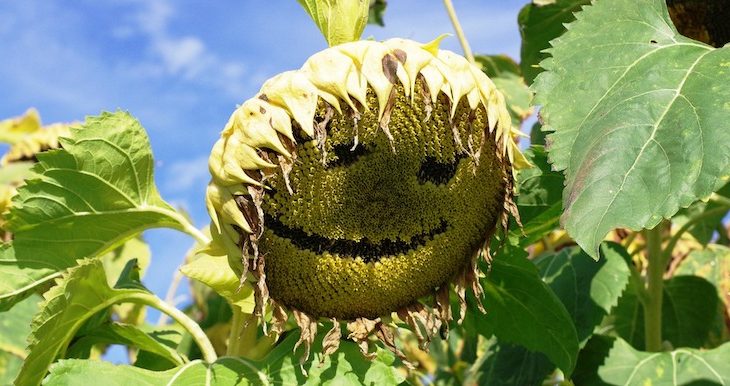Plant behaviour is modulated by a special class of proteins on their cell walls that help them sense and adapt to their environment
Jenna Finley and Sunitha Chari, Biology & Life Sciences co-editors
Plants lack the five basic senses of sight, smell, touch, taste, and hearing that help animals interact with their environment. Yet they react to environmental cues and respond to the presence of other organisms, including pathogens. Until recently, how plants sensed changes in their environment and adapted their behaviour in response to external stimuli was largely a mystery. A new discovery sheds light on the secret lives of plants, revealing a complex network, involving a special class of proteins on their cell walls, that aids in the recognition of, and adaptation to, stimuli in the plants’ vicinity.
These proteins are ubiquitous in both plants and animals and belong to a large family of proteins that are rich in leucine. Leucine is one of the 20 amino acids that are the building blocks of proteins. They recognize many different molecules like peptides, hormones, and secreted proteins from pathogens, and are known as leucine-rich repeat receptor kinases (LRR RK).
These kinases span the cell wall and plasma membrane, projecting both into and outside the cell. The portion of the protein outside the cell is responsible for sensing external stimuli and conveys that information to the cell via the portion of the protein present on the inside. Scientists have known for a while that LRR-receptors serve as a bridge between the cell’s external and internal environments. But little was known about how various types of LRR receptors work in concert to affect plant behaviour or the global organization of the LRR receptor family network. The new research bridges this knowledge gap by working out the LRR RK network and demonstrating that network stability is essential for plant development and survival.
To address the global organization of LRR RK signalling, an international team of scientists based in Europe, the US, and Canada, including the University of Toronto’s Drs. Adam Mott, Darell Desveaux and David Guttman, has mapped the interactions of 200 of the LRR RKs present in thale cress, a small flowering plant native to Eurasia and Africa that’s commonly used in studies of plant biology. There are about 225 LRR RKs in thale cress that facilitate cell growth, and immune and stress responses in plants. They also have a role in the development of stomata, organs on the underside of leaves that help them “breathe” (take in carbon dioxide and release oxygen during photosynthesis).
The scientists investigated about 40,000 interactions between LRR RKs and different types of external stimuli and mapped them on an LRR interaction network map. They showed that interactions with external stimuli caused the portion of the protein inside the cell to interact with various molecules present in the cell. These interactions mediate the plant’s response to environmental or chemical cues. The study also showed that the LRR RKs with short extracellular regions act as nodes connecting a larger network of LRR RKs, and play a vital role in maintaining network integrity.
This suggests that LRR RKs play a central role in directing various key functions required for cell survival. The widespread role of LRR RKs includes providing immunity against invading pathogens and adapting to changing environmental conditions.
In the future, scientists could use this knowledge to genetically modify plants by targeting LRR RK genes that control specific physiological responses. Further research is needed to fully understand how this family of proteins mediates these specific responses. But in the current context of changing global climate and newly emerging pathogens LRR RK research is very important if we want to engineer hardier plants with improved immunity and resistance to environmental stresses.
According to the Food and Agriculture Organization of the United Nations, rising global hunger is being made worse by the climate change effects we’re already feeling. For example, increased rainfall and warmer temperatures can expand a pathogen’s geographic range, while also shortening the time it takes the pathogen to incubate.
For years, Canadian wheat fields have been under attack by Fusarium head blight. It has been called the “most destructive and economically important disease affecting wheat production across Canada” by the Canadian Wheat Board, and climate change will make wheat much more susceptible to it in the coming years as annual temperatures rise.
In addition to pathogen spread and viability, severe storms and droughts will increase as a direct result of climate change. These conditions have heavily affected Canadian agriculture, most recently during the 2001/2002 droughts and 2010/2011 floods. The good news is that given enough time, the researchers believe that their LRR RK findings could also help plants become more resistant to conditions like these.

Wheat affected by Fusarium head blight; photo by CSIRO CC by 3.0
However, there are caveats to any new scientific discovery. Before any genetic engineering can begin, we need to consider possible side effects. We can’t be certain what the ramifications of making plants disease-resistant could be for ecosystems, especially considering that there is a growing body of evidence suggesting that disease actually helps maintain diversity in plant ecosystems. While this isn’t as much of a concern in agricultural systems, which are typically monocultures – a single crop in a given area – concerns have been raised about the possibility of gene movement between species. Weedy and invasive species often exist alongside crops, which could be troublesome for diversity if the resistance genes migrate from the wheat to the weeds.
So while the findings of this study are promising, and could be a big help in the coming years, it’s best to remember that there is a lot of research still to do before we start modifying our food crops.
~30~
Banner image: Pixabay




